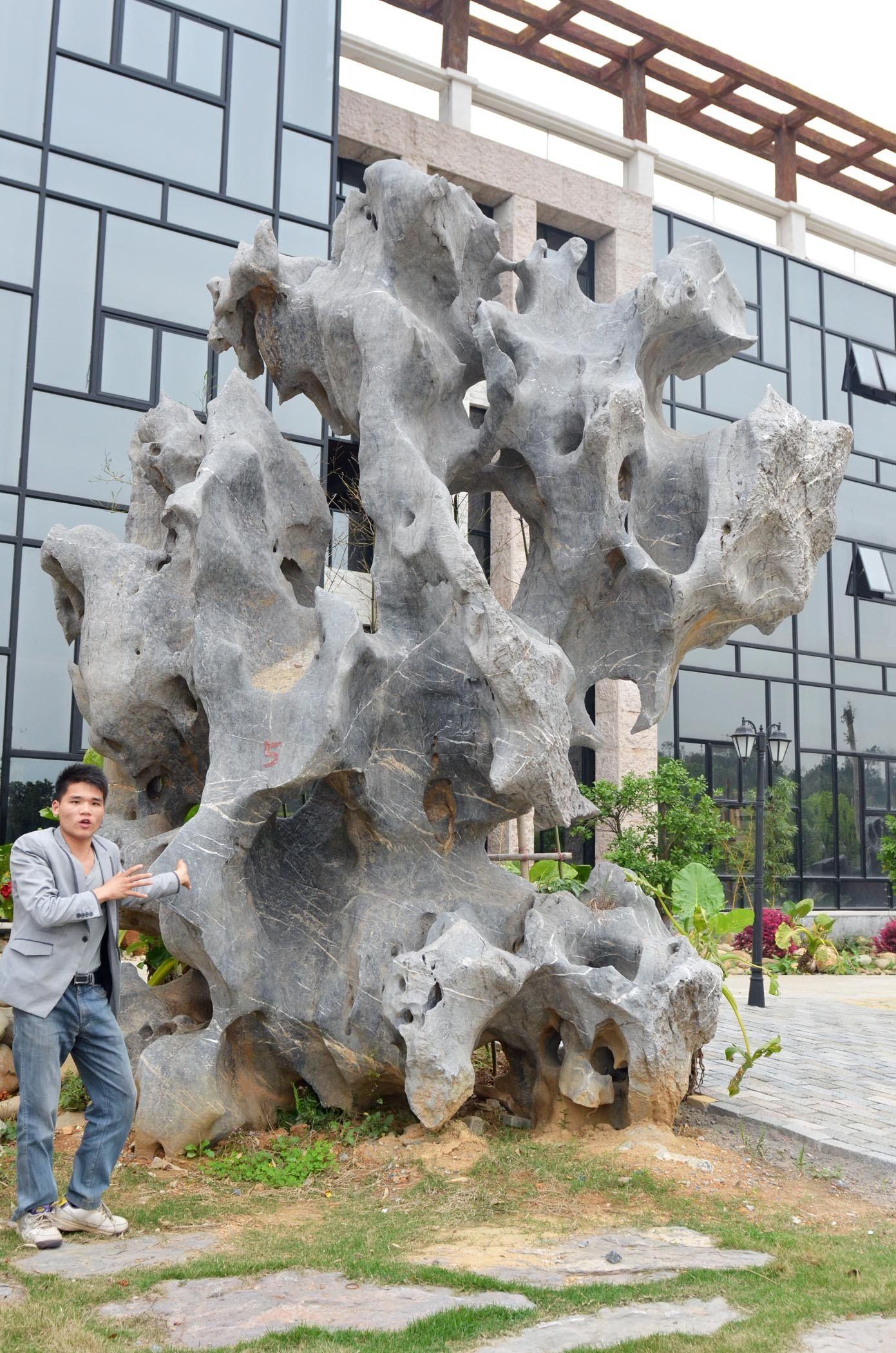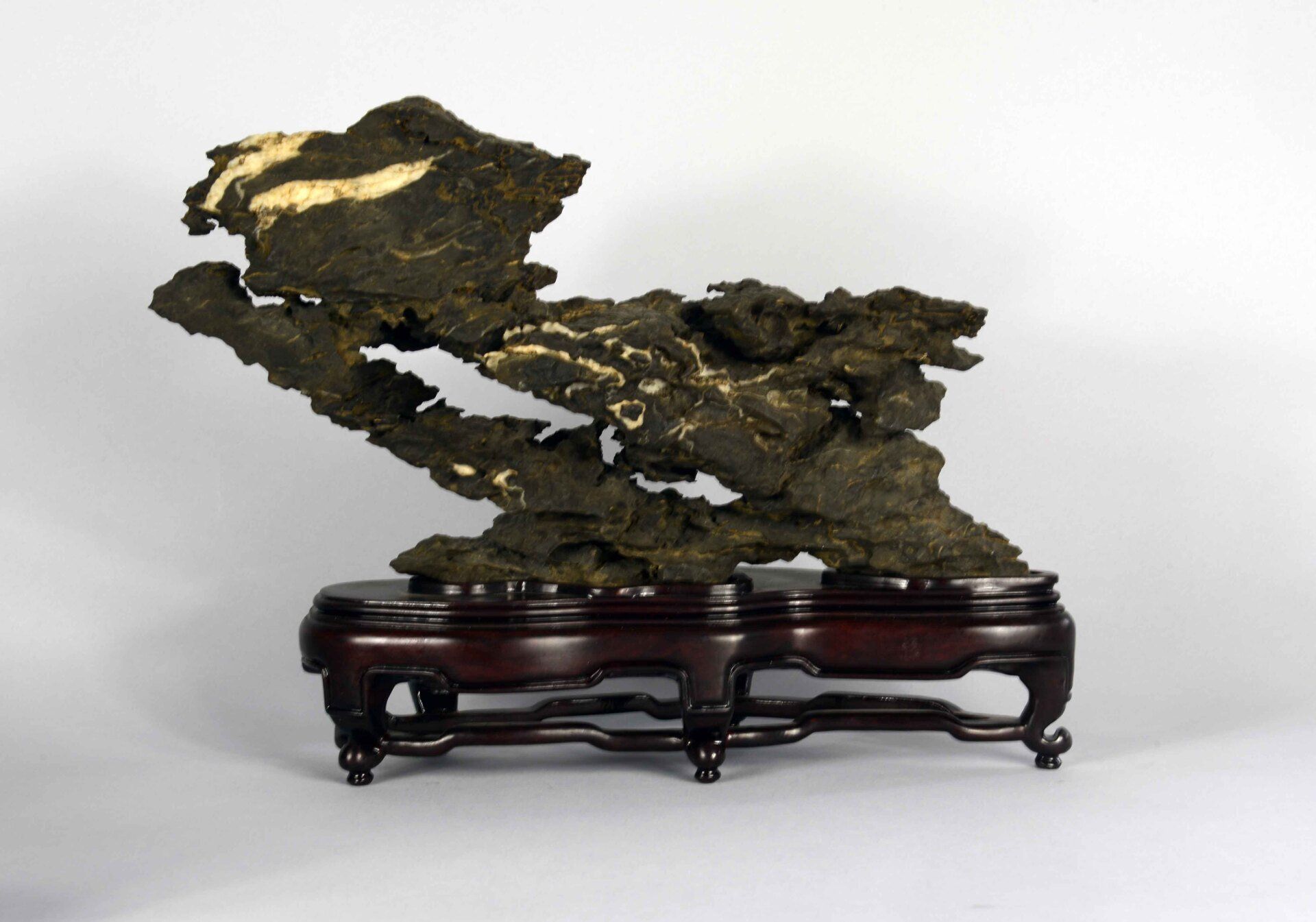The Ying Stones of Southeastern China
A thorough review of Ying stones from southeastern China
By Thomas S. Elias, May, 2022
Three carbonate-type stones in China are widely used as aesthetic objects in homes and gardens—the Lingbi, Taihu, and Ying stones. These stone types are weathered limestone (dolomite) that has been shaped in water (Taihu), in the soil by groundwater (Lingbi), and a combination of rainfall and groundwater (Ying). While the Lingbi and Taihu are better known among western stone appreciation audiences, Ying rocks may be more widely utilized. This essay will illustrate the long and storied use of Ying stones in varying aspects of senses of beauty.
Ying stones have long been valued for their aesthetic qualities in China. They were cited in Tu Wan’s Stone Catalogue of Cloudy Forest, an early 12th-century book of stones. This early publication described Ying stones as various colored rocks, with peaks and hollows, taken from rivers. Ying stones are also illustrated in Lin Youlin’s
Plain Garden Stone Catalog (Suyuan Shipu) published in 1613. Ying stones from the southern provinces were prized in the Song dynasty (960-1279 CE), but according to Mowry they were replaced in popularity by the darker colored Lingbi stones from Anhui province by the Ming dynasty (1368-1644 CE). The Lingbi stones occurred much closer to the cultural centers and gardens in Wuxi, Yangzhou, Nanjing, and Suzhou than the Ying stones. Transporting large stones during the Ming was a significant challenge and may have contributed more to the preference shift for Lingbi stones. Ying stones were displayed in the gardens of the Imperial household in the Forbidden City in Beijing.
Large Ying stones displayed in the garden in the Forbidden City in Beijing.
Ying stones originate in the Yingde Mountains about 138 km (86 miles) north of Guangzhou in the southern province of Guangdong province. Here, the uplifted eroded ridges of carbonate-based rocks are exposed to acid rains and groundwater. As a result, the edges of many Ying stones are sharper and more pointed than rounded, with a plethora of jagged edges, ridges, furrows, and holes. The more uniformed-shaped stones are mined and used in construction while the irregular-shaped forms are used in stone appreciation practices, as rock penjing, and as foundations for root-over-rock tree penjing. These stones are usually light gray, although they can be dark gray to black depending upon the amount of organic matter present among the mineral contents of the rock. Similar rock from neighboring Guangxi province is also marketed as Ying stone. These are fairly soft stones measuring between 3 and 4 on the Mohs Scale of hardness. Ying stones are generally brittle and easily broken and generally not sonorous like the more northern Lingbi. But Ying stones offer a wider range of intricate forms than the Lingbi.
Not all Ying stones are found in exposed or semi-exposed locations. Some Ying stones are also dug from the soil. These stones have been subject to groundwater movements perhaps more than to acid rainfall. Thus, softer portions of these rocks are preserved instead of being more severely weathered as are the more exposed rocks. These Ying stones are generally much larger with rounded edges, occasional holes, and abstract shapes. They closely resemble the more northern Lingbi stone of Anhui province.

The majority of Ying stones are abstract in form which contributes to their appeal as viewing stones. The form, color, and texture combine to bring to mind something other than an irregularly shaped rock. The shapes may remind us of a landscape scene, an imaginary or real creature found in literature or nature, a legend, or one of the myriad ways that people have explained the forces found in nature. The forces of nature that caused the stone’s current shape are impressive, but it is the viewing experience that is important.
Let’s consider the following Ying stones. The dark gray with horizontal white calcite veins evokes a feeling of a tiger or other fierce animal. The lighter gray vertically oriented stone may remind us of the concept of gates or passageways (Dongtian) to heaven as described in Taoist beliefs.


The great variation in shapes and sizes can be seen in the shops in the city of Yingde that specialize in Ying stones. They offer a range of small to large stones at reasonable prices. Below is a two-stone combination display that recalls the well-known bureaucrat and calligrapher Mi Fu paying respects to a large stone in front of his office. Stone collectors in Guandong province maintain that this was a Ying stone. In addition to numerous abstract-shaped stones, rugged landscape scenes can be found among the Ying stones.
In the last decade, small Ying stones have become popular in southern China. There are rare and prized for their intricate forms. These tiny stones bear a close resemblance to the large outdoor courtyard stones seen in classical gardens. Diminutive Ying stones are suitable for displays in apartments and condominiums where larger-sized stones would be less suitable. Most small Ying stones range in size from 8 to 12 cm (3 to 4.7 inches) tall or wide.
Certain Ying stones with deep grooves and ridges are ideal for making the root-over-rock style tree penjing. A tree with its roots growing over an irregular-shaped rock is appealing form to penjing and bonsai artists. Young trees can be added to the deeper pockets in these stones. Alternately, the roots of young trees can be placed in the grooves of a Ying stone and then covered with soil in a deep pot or container, and as the tree grows, the soil is slowly lowered by removing about a centimeter of soil each year. Over several years, the root system grows over the rock and firmly holds the trunk and branches securely. Ying rocks are best because they are slightly porous and retain moisture. Since Ying stones are calcium carbonate-based rocks, they are not toxic or harmful to the living tree.
The southeastern Ying stones have been an important aspect of Chinese stone appreciation practices and Chinese culture for centuries. That tradition is continuing to the present.

